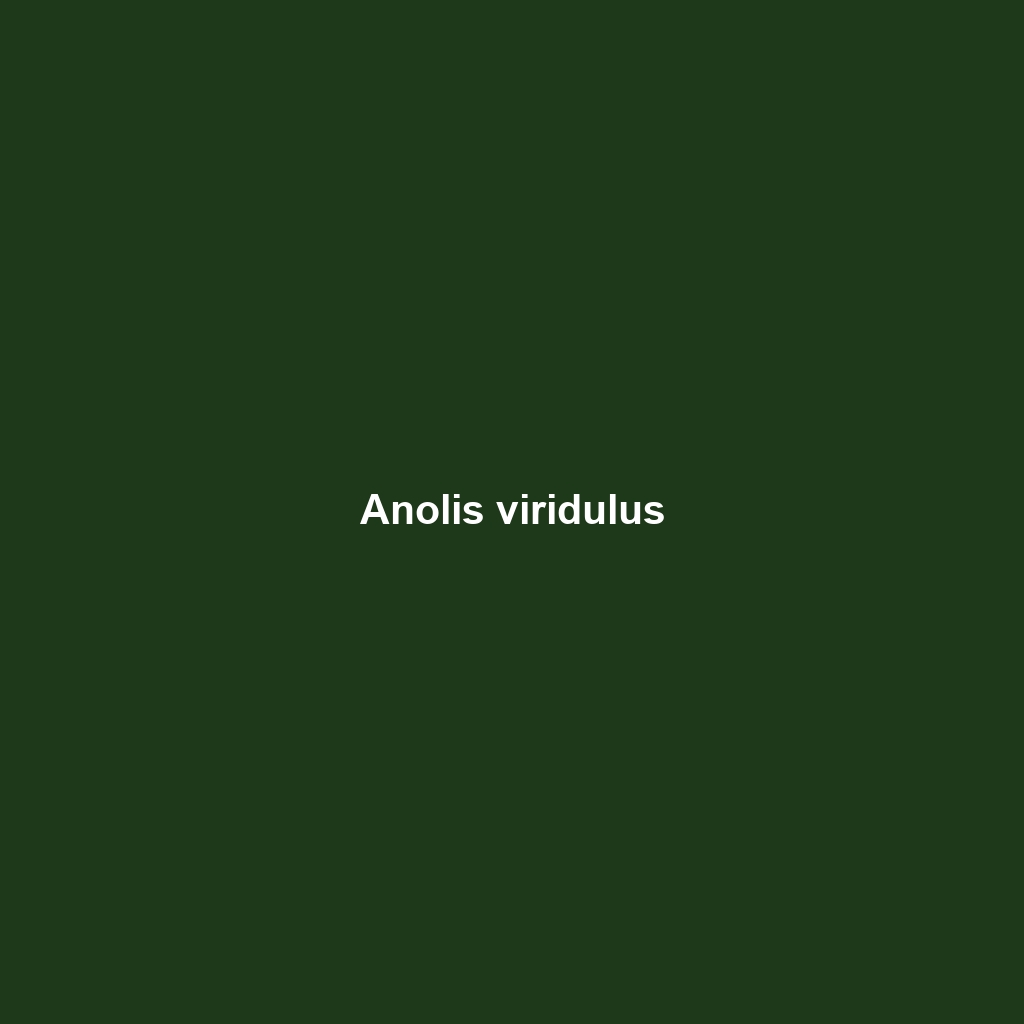Common Name: Anolis viridulus
Scientific Name: Anolis viridulus
Habitat:
Anolis viridulus, commonly known as the green anole, is primarily found in the humid forests and shrublands of the Caribbean, particularly across the islands of Cuba and the Bahamas. This species thrives in subtropical environments, often residing in areas abundant with foliage, where it can easily camouflage itself amongst the green leaves and branches.
Physical Characteristics:
The green anole reaches a total length of about 20 to 25 cm (8 to 10 inches), including its tail. Its vibrant green coloration serves as excellent camouflage in its natural habitat. Male Anolis viridulus typically possess a distinctive dewlap that is used in mating displays and territorial behaviors. They exhibit a slender, elongated body shape with a pointed snout, making them adept climbers.
Behavior:
Anolis viridulus is known for its territorial and display behaviors, particularly noticeable during mating season when males showcase their vibrant dewlaps. These lizards are diurnal, exhibiting activity during daylight hours when they forage for food and bask in sunlight. Their ability to change color slightly in response to environmental conditions adds to their behavioral adaptability.
Diet:
The diet of Anolis viridulus primarily consists of small insects, including crickets, beetles, and ants. They are opportunistic feeders, actively hunting and catching prey using their quick movements and sharp reflexes. This species may also consume small spiders, utilizing their keen eyesight to spot food within their leafy surroundings.
Reproduction:
Breeding for Anolis viridulus typically occurs during the warmer months, often peaking in spring and summer. Males engage in elaborate courtship displays, showcasing their dewlaps to attract females. After mating, females lay one to two eggs in moist substrate, with the eggs hatching after approximately 30 days. Hatchlings are independent from birth and begin to develop their remarkable green coloration shortly after.
Conservation Status:
As of now, Anolis viridulus is not listed as endangered, yet habitat loss and climate change pose potential threats to their populations. Continued monitoring is necessary to ensure their habitats remain stable and protected, emphasizing the importance of conservation efforts in their native regions.
Interesting Facts:
One fascinating aspect of the Anolis viridulus is its ability to change shades in response to temperature and mood, making it a subject of interest for scientists studying adaptation and survival in changing environments. Additionally, these lizards are often regarded as indicators of ecological health in their habitat due to their sensitivity to environmental changes.
Role in Ecosystem:
Anolis viridulus plays a crucial role in its ecosystem as both a predator and prey. By controlling insect populations, these lizards contribute to the health of their environment, while also serving as a food source for larger predators, thereby maintaining the balance within their ecological community. Their presence signifies a biodiverse and healthy habitat, highlighting their importance in the Caribbean’s ecosystem.
